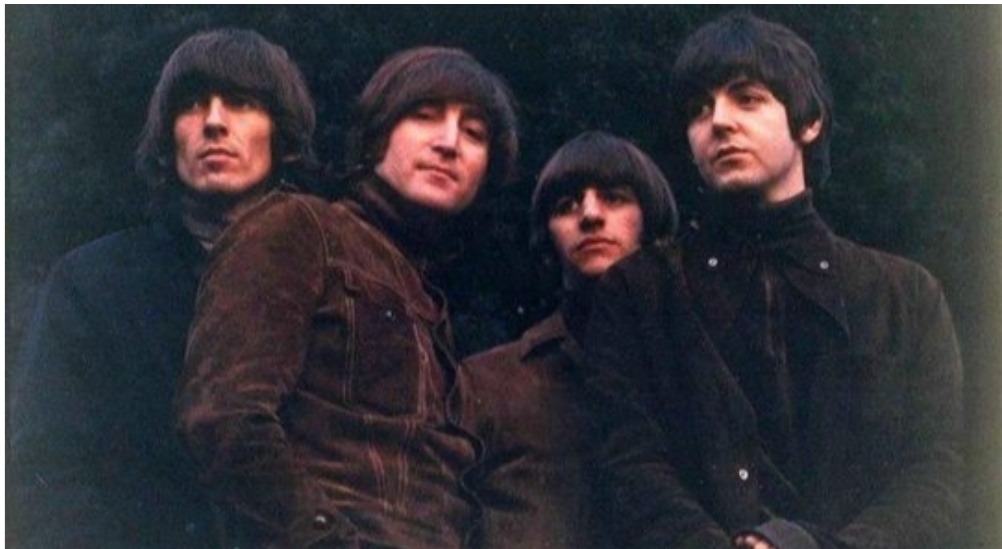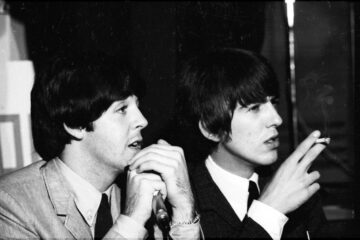In 1965, The Beatles were the biggest band on the planet. With five albums, multiple films and even a cartoon under their belt, Beatlemania was in full swing, allowing the Liverpool lads to tour across the globe. However, as autumn rolled around, the band entered the studio to record album number six – Rubber Soul – marking a turning point in their creative output. The record signifies the band’s progression as mature songwriters and musicians. With Rubber Soul, The Beatles evidently develop their craft, carving out a sound that rings out with considerable individuality.
Immediately, Rubber Soul opens with the unforgettable soul-inspired ‘Drive My Car’, which sees John Lennon and Paul McCartney share lead vocal duties over a bluesy riff. Not only is the song inescapably catchy and ripe with singalong lines, but it is also instrumentally outstanding, with McCartney’s piano and slide guitar solo adding an extra layer of dimension. Albeit, the patriarchal lyrics are somewhat questionable, to say the least.
The following track, ‘Norwegian Wood (This Bird Has Flown)’, employs a sitar, making it the first Western rock recording to feature an Indian instrument. Lennon’s humorously sinister storytelling details an encounter with a woman who owns furniture made from, you guessed it, Norwegian wood. By the song’s end, her house is on fire, yet Lennon’s voice remains utterly charming as gentle guitars meld with the sitar in a delightful melody making for a strange postmodernist juxtaposition.
The harmonies on ‘You Won’t See Me’ and ‘Nowhere Man’, meanwhile, are particularly majestic, with the latter acting as one of the record’s standout tracks. Unlike the previous songs, love and romance are absent in ‘Nowhere Man’. Instead, Lennon explores more intricate themes within his writing, describing an aimless man as he harmonises in perfect tune with McCartney and Harrison. The melancholic tone of the track is swiftly contrasted by the upbeat Harrison-penned ‘Think For Yourself’, a rhythmic political rally against the government which features a fuzz bass, lending the album one of its heaviest moments.
The jolting guitar riff that drives ‘The Word’ is the best part of a track that otherwise tires quickly through its repetitive melodies and simple lyrics. Although it’s not a bad song, it pales compared to the tracks it is sandwiched between, such as ‘Michelle’, which takes inspiration from French pop. McCartney uses his best accent to sing a few French lines, giving the sweet love ballad an endearing quality. Initially written as a joke while a teenager, McCartney reworks his French satire into one of the album’s most enduring pieces, demonstrating his vocal abilities well, as evidenced in the desperate melodies of his “I love you”, “I need you”, and “I want you” refrains.
Ringo Starr’s ‘What Goes On’ opens side two, bearing significant country and rockabilly influence. His fast-paced drum beat propels the track forward, giving it an infectious rhythm. However, the album’s pace slows down on Lennon’s exquisite ‘Girl’, a downbeat yet sumptuous meditation on a girl he can’t seem to rid from his mind. Lennon’s lyrical talents shine yet again as he questions his loyalty to a girl who “you want so much, it makes you sorry”.
Listening to Rubber Soul is an indulgent experience. With every guitar riff, no matter how intricate or straightforward, and every whack on Starr’s drums, the album harnesses a buzzing sense of excitement, progression and innovation. The band members have grabbed influences from every inch of their minds’ musical repertoires, creating an amalgamation of sounds and feelings that encapsulate something distinctively human and bountiful.
The album is a life-affirming piece of art, unafraid to throw a touch of sourness into the mix. This bittersweet theme is perhaps best exhibited on ‘I’m Looking Through You’. The track maintains a heady beat while McCartney laments a failing relationship, singing: “Love has a nasty habit of disappearing overnight”. However, once again, Lennon’s ability to convey the lucidity of memory and the power of love shines through ‘In My Life’, one of the album’s most gentle and sublime moments. The simple guitar riff conveys a hefty weight of emotion that echoes through Lennon’s lyrical reminiscences of the past, “All these places had their moments/ With lovers and friends, I still can recall/ Some are dead, and some are living/ In my life, I’ve loved them all”.
The Help! outtake ‘Wait’ is a fun piece of pop that echoes the band’s earlier sound while maintaining the album’s folk influence. The similarly upbeat ‘If I Needed Someone’, a love song for Harrison’s girlfriend Pattie Boyd, is a simple yet classic Beatles track whose nostalgic guitars and rich harmonies can’t be faulted. Rubber Soul ends on a questionable note in the form of ‘Run for Your Life’, one of the band’s most controversial songs. The cheery sonics contrast Lennon’s violent lyrics, “I’d rather see you dead, little girl/ Than to be with another man”. Lennon’s boldly possessive lyrics are an uncomfortable listen, weakening an otherwise great track.
Still, all the minor flaws that Rubber Soul harnesses are quickly overshadowed by slices of pure brilliance, ranging from the singalong satire of ‘Drive My Car’ to the wonderfully composed ‘In My Life’. The Beatles mix folk and psychedelic influences into their pop-rock-R&B hybrid, crafting an astounding body of work that reflects the Fab Four’s progression as innovative musicians. Rubber Soul is a true masterpiece.



